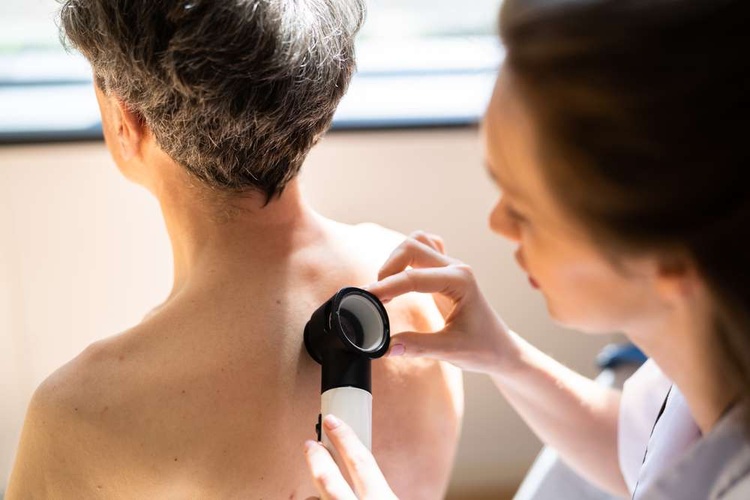Managing Genital Psoriasis: A Practical Guide
Genital psoriasis is a challenging condition that affects a sensitive area of the body, often causing discomfort and distress for those who experience it. This form of psoriasis requires special care and attention due to the delicate nature of the affected skin. Understanding the symptoms and treatment options is crucial for effectively managing this condition and improving quality of life. In this comprehensive guide, we'll explore the various aspects of genital psoriasis, from recognizing its signs to implementing practical treatment strategies.

What are the common symptoms of genital psoriasis?
Genital psoriasis can manifest in several ways, often differing from psoriasis on other parts of the body. The most common symptoms include red, inflamed patches of skin in the genital area, which may appear smooth and shiny rather than scaly. Patients may experience itching, burning sensations, and discomfort during physical activities or intimate moments. The affected skin can be particularly sensitive and prone to cracking or bleeding, especially during movement or sexual intercourse. It’s important to note that symptoms can vary from person to person and may fluctuate in severity over time.
How is genital psoriasis diagnosed?
Diagnosing genital psoriasis typically involves a thorough physical examination by a dermatologist or healthcare provider experienced in treating psoriasis. During the examination, the doctor will assess the appearance of the affected skin and may ask about the patient’s medical history, including any family history of psoriasis or other skin conditions. In some cases, a small skin biopsy may be necessary to confirm the diagnosis and rule out other potential conditions. It’s crucial for patients to be open and honest about their symptoms and concerns to ensure an accurate diagnosis and appropriate treatment plan.
What are the most effective treatments for genital psoriasis?
Treatment for genital psoriasis often requires a tailored approach due to the sensitivity of the affected area. Topical treatments are usually the first line of defense. Mild corticosteroid creams or ointments can help reduce inflammation and itching, but they must be used carefully and under medical supervision to avoid skin thinning. Non-steroidal topical medications, such as calcineurin inhibitors (tacrolimus or pimecrolimus), can be effective alternatives that don’t carry the same risk of skin atrophy. For more severe cases, phototherapy or systemic medications may be considered, but these treatments must be carefully monitored due to the potential for side effects in the genital region.
How can lifestyle changes help manage genital psoriasis?
Implementing certain lifestyle changes can significantly improve the management of genital psoriasis. Wearing loose, breathable clothing made from natural fibers can help reduce friction and irritation. Maintaining proper hygiene is crucial, but it’s important to use gentle, fragrance-free cleansers and avoid harsh soaps or scrubbing. After bathing, patting the area dry and applying a gentle moisturizer can help keep the skin hydrated. Stress management techniques, such as meditation or yoga, may also be beneficial, as stress is a known trigger for psoriasis flare-ups. Additionally, maintaining a healthy diet and avoiding known triggers, such as alcohol or certain foods, can contribute to better overall skin health.
What are some practical tips for intimacy with genital psoriasis?
Dealing with genital psoriasis can be particularly challenging when it comes to intimate relationships. Open communication with partners is essential to address any concerns and ensure mutual comfort. Using lubrication during sexual activity can help reduce friction and discomfort. It’s advisable to avoid intimate contact during severe flare-ups to prevent further irritation. Experimenting with different positions or techniques that minimize pressure on affected areas can also be helpful. Some individuals find that applying a barrier cream or ointment before intimate activities can provide additional protection. Remember, genital psoriasis is not contagious, and with proper management, many people maintain satisfying intimate relationships.
How can one choose the right treatment plan for genital psoriasis?
Selecting the most appropriate treatment plan for genital psoriasis involves careful consideration of various factors, including the severity of symptoms, overall health, and individual preferences. It’s crucial to work closely with a dermatologist or healthcare provider experienced in treating genital psoriasis to develop a personalized approach. Here’s a comparison of some common treatment options:
| Treatment Option | Provider Type | Key Features | Cost Estimation |
|---|---|---|---|
| Topical Corticosteroids | Prescription from dermatologist | Quick relief, risk of side effects with long-term use | $10 - $50 per tube |
| Calcineurin Inhibitors | Prescription from dermatologist | Effective for sensitive areas, may cause initial burning sensation | $100 - $300 per tube |
| Phototherapy | Dermatology clinic | Non-invasive, requires multiple sessions | $100 - $300 per session |
| Systemic Medications | Prescription from dermatologist | For severe cases, potential for serious side effects | $500 - $5000+ per month |
Prices, rates, or cost estimates mentioned in this article are based on the latest available information but may change over time. Independent research is advised before making financial decisions.
When choosing a treatment plan, consider factors such as the potential side effects, required time commitment, and overall effectiveness for your specific case. Some treatments may be more suitable for long-term management, while others are better for addressing acute flare-ups. It’s also important to discuss any concerns about costs or insurance coverage with your healthcare provider, as they may be able to suggest more affordable alternatives or patient assistance programs.
In conclusion, managing genital psoriasis requires a comprehensive approach that combines medical treatments with lifestyle adjustments. By understanding the condition, working closely with healthcare providers, and implementing practical strategies for daily care and intimacy, individuals with genital psoriasis can effectively manage their symptoms and improve their quality of life. Remember that finding the right treatment plan may take time and patience, but with perseverance and proper care, it is possible to achieve significant relief and maintain healthy, comfortable skin in the genital area.
This article is for informational purposes only and should not be considered medical advice. Please consult a qualified healthcare professional for personalized guidance and treatment.
The shared information of this article is up-to-date as of the publishing date. For more up-to-date information, please conduct your own research.






